A series of illustrations made in the style of renaissance woodcut prints. Based on real 15th and 16th century warriors, influenced mostly by landsknechts and Ottomans.
They are made in limited edition of 20 each, size A5, hand signed and numbered (if you want one, write a message, I send them world wide).

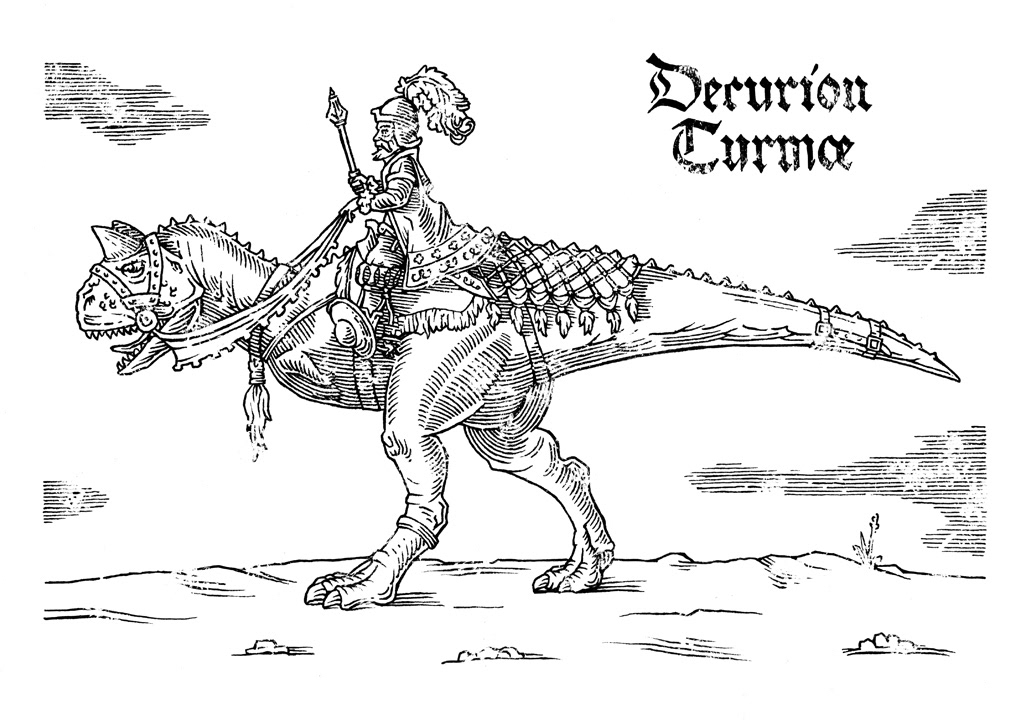
"Decurion Turmae" is a title so it usually isn't translated. It could be translated as "Squad Leader". Term derives from the times when 3 carnotaurus riders equally commanded a unit of 30. With many reforms, command was given to a single Decurion and unit grew to 50 men. It used to be a much desired position, as it was a springboard for military as well as a political career. Some Decurions even ended up as tyrants. With reforms it was ensured that the rank is purely military, but Decurions still strut around with colourful robes and decorations for their carnotaurus. They are usually rightly proud because they are known for their courage and are redoubtable warriors.

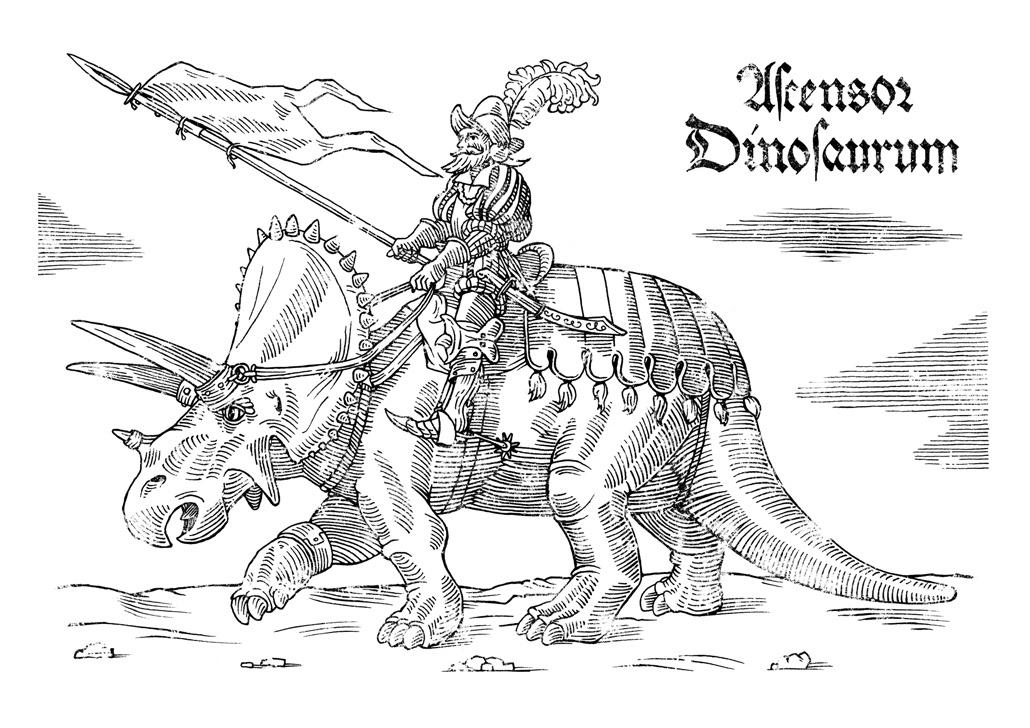
"Ascensor dinosaurum" can be easily translated as "The Dinosaur Rider". This unit presents the core of the army, heavy riders that slam into enemy lines with full power and speed. As long as the unit stays together, it can mow down anything in its path. It takes a bit more discipline and time to regroup and repeat the attack. That's when they're the most vulnerable. Upper body is clad in a Landsknecht uniform, providing mobility but less protection against heavy weapons (he doesn't need that protection up there), legs are heavily protected an he's wearing metal shoes to deal heavy blows. He's holding a long spear because any other weapon is useless from this height. Just in case of an up close confrontation there is a light curved sabre.

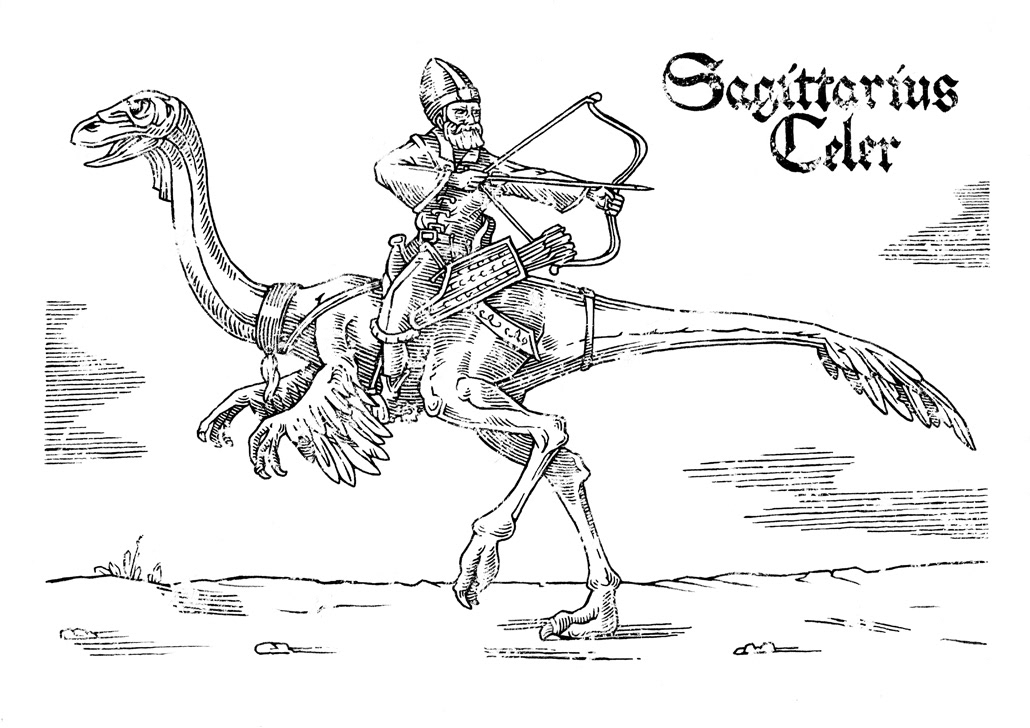
"Sagittarius Celer" or "Rapid archer". Formations of these agile, swift, lightly armed and lightly armoured riders are composed of irregular troops that in peaceful times rely mainly on looting the border territories. In battle they generally don't physically engage with the enemy. On their struthiomimus they circle the enemy, showering them with arrows and changing positions before the enemy can engage them. They are often used as advance troops to confuse and demoralise opposing army and general population. The archers are descendands of herders from the plains, where children can ride ther struthiomimus before they learn to walk. They don't breed animals, instead they steal eggs from the nests in nature, always carefuly choosing only one egg, leaving the others. Every rider trains his own animal, forming a special life long bond.

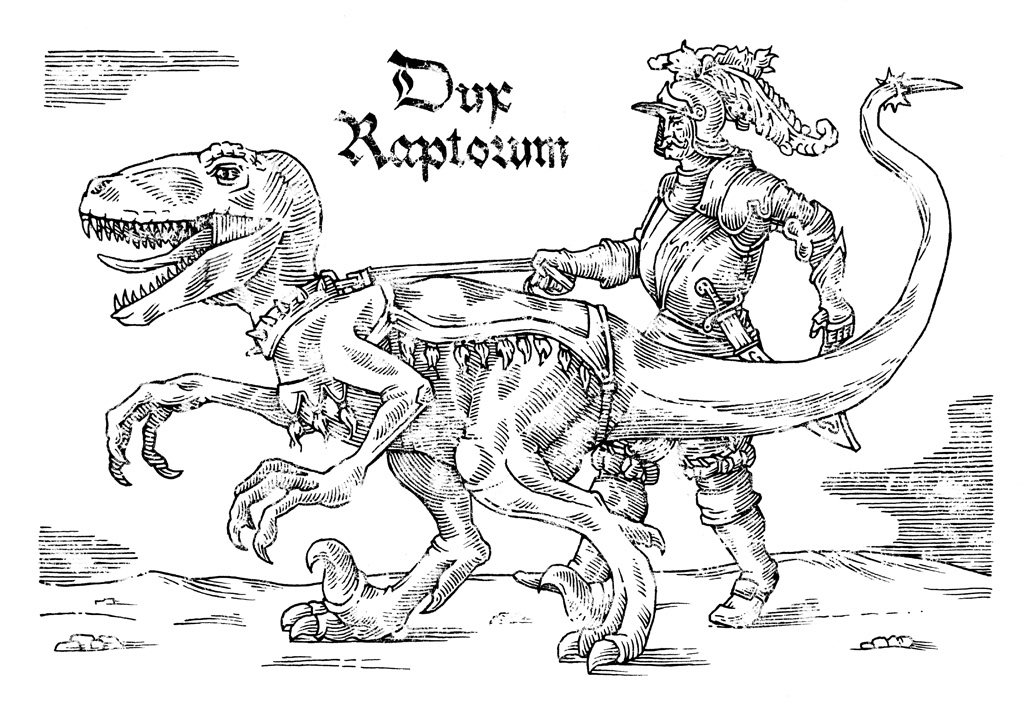
"Dux Raptorem" or "Raptor Handler" is a position in the army only for the strongest of characters. Deinonychus, a species of raptor most suitable for training, is known for its temperament. The handlers are protected by layers of armour, not because of the enemy, but because of frequent attacks by their own animals.
Raptors commonly guard an army on the move as, thanks to their acute senses, they quickly locate ambushes and booby traps. They defend camps, guard prisoners and track fugitives but there are also cases when they are used as shock troops to brake the enemy ranks.
Raptors commonly guard an army on the move as, thanks to their acute senses, they quickly locate ambushes and booby traps. They defend camps, guard prisoners and track fugitives but there are also cases when they are used as shock troops to brake the enemy ranks.

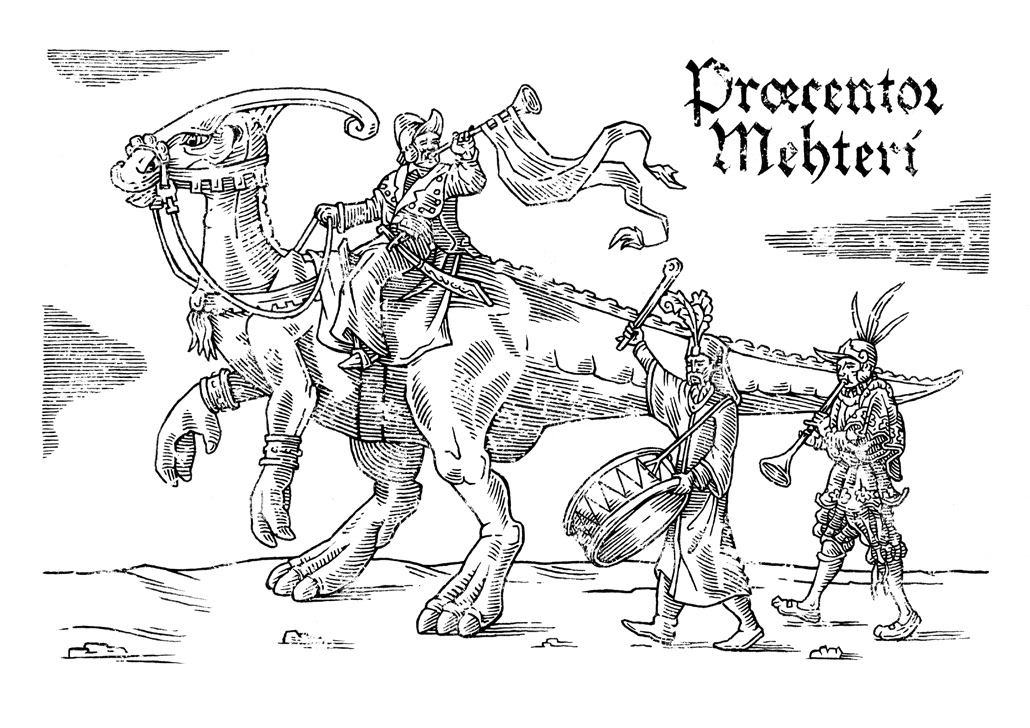
"Praecentor Mehteri" or "Military band leader". Ever since there is organised army, it uses instrumens. For conveying orders on the battlefield, for marching rhythm, morale boosting... In time the musicians with different functions within the army started forming military bands. A band is a close-knit unit, a part of a regular army. Apart from battlefield functions, orchestras also take part in glorious parades. Centuries ago, some musicians noticed that parasaurolophus respond to sounds of brass instruments and started using them - also because of their size - for military service. Some musical compositions even include the sounds of parasaurolophus. They are trained to sing along the band by the most experienced musicians and riders. Those men usualy take the position of the band leader due to their skills.





